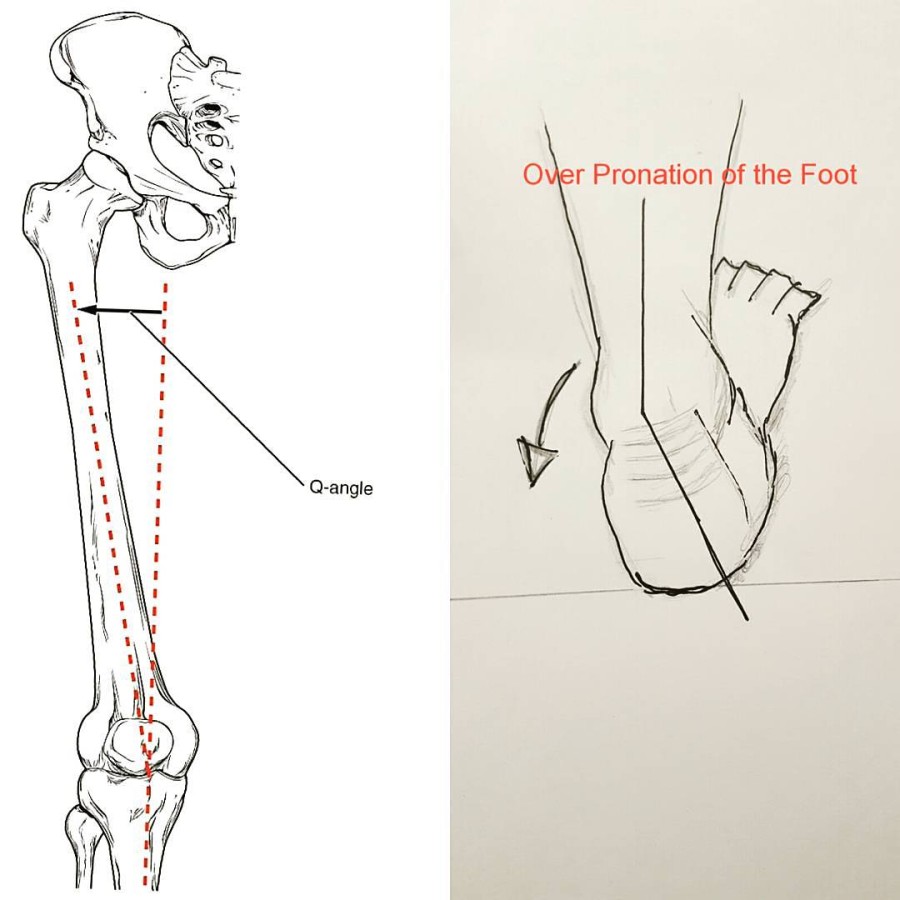PATELLOFEMORAL PAIN
CAUSES PART TWO: THE Q ANGLE
The #Qangle (above left image) aka the Quadricep angle is formerd by:
1. A vertical imaginary line running from the tibial tuberosity (bone at the top of the shin bone under the kneecap) through the middle of the kneecap.
2. A line from the ASIS (Bone sticking out at the top of the leg on the hip bone) through the middle of the kneecap.
The normal Q angle is said to be between 14 (males) to 17 (females) degrees. An angle of 18 degrees or more increases risk of knee pain and anterior cruciate ligament injury . This is because:
1. It increases the angle between the #patella and #quadricep #tendons –> potential injury.
2. The kneecap itself does not move in its groove as smoothly and there is am increased rate if degeneration and #sublux or #dislocation.
There are many factors that can increase the size of the Q angle. They are:
1. Females – have a wider #pelvis –> larger q angle. Anterior knee pain is very common in women <30 especially runners. #Osteoarthritis of the knee is also more common in females. 2. Hip Joint - #anterversion or #retroversion of the hip, coxa vara, osteoarthritis all INCREASE the Q angle. 3. Knee Joint - 'Knock Knees' and outward rotation of the shin bone aka Footballer's Legs also INCREASES the Q angle. 4. Foot - #Overpronation or a flat arch also INCREASES the Q angle. 5. Muscle weakness or #Imbalance - Weak #glute muscles and deep leg muscles INCREASE the Q angle. A SHORTENED INCIDENTS calf head and #POPLITEUS also turn the shin bone inwards INCREASING the Q angle. Some of these factors can be resolved with treatment and #rehabilitation. Stay tuned for more on anterior knee pain.



